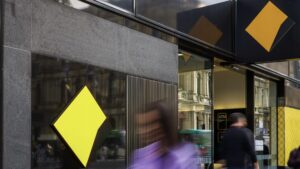Sweetie, darling! These ASX fashion stocks look surprisingly good

Pic: Rommel Gonzalez / EyeEm / EyeEm via Getty Images
Media coverage of this month’s Australian Fashion Week was breathlessly positive — but does that mean you should be investing in ASX-listed fashion stocks?
At first glance the fashion industry may not seem like a good investment.
Two listed fashion stocks — Oroton and Surfstich — went to the wall in the past year.
Hong Kong-listed fashion brand Esprit pulled out of Australia and New Zealand earlier this month, saying its 60 stores had been unprofitable for some time and would be closed. Esprit follows other recent departees such as Gap and Topshop.
Earlier this week Specialty Fashion Group (ASX:SFH) sold off most of its retail chains to fellow listed fashionista Noni B (ASX:NBL) for $31 million. Which may sound dire — but its shares have quintupled since December.
In fact, consultancy McKinsey & Company is optimistic about the industry’s outlook.
“The fashion industry is turning a corner,” McKinsey says in its “State of Fashion 2018” report, launched last week in Australia. (The report can be downloaded here).
McKinsey forecasts global fashion sales growth to triple between 2016 and 2018, from 1.5 per cent to between 3.5 per cent and 4.5 percent.
“Looking towards 2018, there is a new sense of optimism in an industry plagued by uncertainty. While ‘uncertain’ and ‘challenging’ remain the most common words that executives have used to describe the state of the industry this year, right behind them in third place is ‘optimism’.”
The ASX offers about a dozen stocks with direct exposure to the fashion industry — and it looks like McKinsey is right.
Surprisingly, most of them have done pretty well so far this year.
Here’s how ASX fashion stocks have performed so far in 2018:
| ASX code | Company | Price change YTD (Jan-May) | Price May 22 | Market Cap |
|---|---|---|---|---|
| SFH | SPECIALTY FASHION | 3.96551724138 | 0.72 | 144.2M |
| AX1 | ACCENT GROUP | 0.77380952381 | 1.49 | 797.2M |
| LOV | LOVISA | 0.693198263386 | 11.7 | 1.2B |
| NBL | NONI B | 0.442105263158 | 2.74 | 244.1M |
| GZL | GAZAL CORP | 0.282722513089 | 2.45 | 108.7M |
| GLB | GLOBE INTL | 0.239316239316 | 1.45 | 60.1M |
| PMV | PREMIER INV | 0.0807327001357 | 15.93 | 2.5B |
| SBB | SUNBRIDGE GROUP | 0 | 0.012 | 5.7M |
| ORL | OROTON (suspended) | 0 | 0.435 | 18.3M |
| PGR | THE PAS GROUP | -0.105882352941 | 0.38 | 51.9M |
| NC6 | NANOLLOSE (listed Oct 2017) | -0.216216216216 | 0.145 | 10.9M |
| GLE | GLG CORP | -0.34 | 0.165 | 12.2M |
Those considering investing in fashion stocks should look out for companies able to thrive amid these trends:
- Geo-political turmoil, economic uncertainty and unpredictability as “the new normal”
- Continued globalisation
- Innovation, investment and expansion from Asian players
- Personalisation, curation and sustainability as consumer drivers
- Online retailing increasingly moving to the mobile phone
- Innovators to thrive including those who think like start-ups and figure out how to make use of artificial intelligence
Here’s a quick rundown of key ASX stocks with direct exposure to the fashion industry:
Globe International (ASX:GLB) is one of the best known ASX fashion stocks. It focuses on street fashion and work-wear.
Globe is 21 per cent owned by US apparel giant PVH Corp, which owns iconic brands such as Calvin Klein and Tommy Hilfiger.
Globe reported an increase in profit for the December half-year “despite sales remaining largely flat”.
Profit was up 37 per cent to $3.4 million on $70.2 million revenue. Cash-flows were down to $5.2 million, compared to $6.7 million.
Solomon Lew’s Premier Investments (ASX:PMV) owns the Just Group which includes Just Jeans, pajama purveyor Peter Alexander and women’s fashion retailers Portmans, Jacqui E and Dotti.
In March, Premier reported a record first-half profit of $78.6 million — up 9.4 per cent on the same period last year — from sales of $630.1 million (up 7 per cent).
“Premier Investments has again delivered a very strong result,” Mr Lew told investors at the time.
Underlying profit reached $102.5 million — “the first time the business has achieved an underlying EBIT above $100 million for a half”, Mr Lew said.
“This outstanding achievement once again demonstrates the ability of Premier’s Board and executives to both set a strategy and rigorously implement that strategy to deliver superior returns to shareholders despite operating in a challenging market.”
- Bookmark this link for small cap breaking news
- Discuss small cap news in our Facebook group
- Follow us on Facebook or Twitter
- Subscribe to our daily newsletter
Lovisa (ASX:LOV) is a fashion accessories seller that “takes inspiration” from the latest runway trends — but offers jewellery at “ready-to-wear prices”.
After launching its first store in 2010, Lovisa is now distributed in 15 countries and 300 stores.
The billion-dollar brand had good news for investors recently with first-half profit up 22 per cent to $25 million and sales up 19 per cent to $119 million.
In the March quarter “the business has continued to take advantage of strong global trends in the fashion jewellery sector”, resulting in sales growth of 20 per cent.
The PAS Group (ASX:PGR) — which markets a fashion porfolio through 280 retail stores — has had a tougher time of late.
The group retails and wholesales more than 20 brands such as Yarra Trail, Marco Polo, Breakaway, Black Pepper, Mooks, World Industries and sport brands including Russell Athletic and Slazenger.
PAS recently highlighted “ongoing subdued consumer sentiment, industry wide traffic headwinds and the elevated promotional environment” which lowered its full year 2018 EBITDA earnings forecast to between $10 million and $13 million.
Earlier in the year PAS was expecting first-half EBITDA earnings of $8 million to $8.5 million.
In the footwear segment, there’s regional-focused shoe seller Accent Group (AX1) which represents brands including The Athlete’s Foot, Hype DC, Skechers, Vans and Timberland in 420 Australian and New Zealand stores.
Accent reported a 13 per cent jump in half-year profit to $26.3 million.
Micro-cap fashion stocks
Microcap fashion stocks include China-focused clothing group Sunbridge (ASX:SBB) which targets the “well-groomed upper middle class gentleman” via 310 stores.
Sunbridge says it “continues to maintain its market share despite strong competitive pressures”.
The group designs its own clothes but outsources production “enabling it to focus its valuable resources on key design, procurement, warehousing and distribution functions giving the group a competitive edge”.
Sunbridge lost $350,000 last year on slightly lower revenue of $56.6 million.
There’s also Singapore-based GLG Corp (ASX:GLE) which makes fabric and clothes in its own factories in Malaysia and Vietnam. The business is on a journey from its origin as a trader into a “vertically integrated” fashion seller.
“This entire value chain ranging from product design, process innovation through knitted fabric manufacturing to last-mile delivery of knitted garments to our customers’ doorstep is now embedded into our current financial results ended 30 June 2017.
GLG reported a 25 per cent increase in revenue to $US88 million for the December half to due to “business wins achieved in new programs with existing customers, in addition to increase in volume for repeat orders”.
Profit of $US1.8 million fell 12 per cent due to higher expenses.
Something a bit different
Still not convinced?
Take a look at Aussie fermented fashion maker Nanollose (ASX:NC6), which is pioneering the use of plant-free fabrics.
Demand for sustainable fashion “is transforming product design and manufacturing”, McKinsey’s 2017 State of Fashion report found in December.
In some markets, more than 65 per cent of consumers actively seek out sustainable fashion and products.
Nanollose — which isn’t yet making any money — produces plant-free fibres from liquid bio-mass such as beer, wine and food waste as an alternative to cotton, flax and timber.
The stock listed last year after raising $5 million selling shares for 20c each.
Finally, for those who adhere to a “sex sells” investment strategy, there’s adult product retailer Delecta (ASX:DLC).
Among other things, Delecta sells lingerie ranges from brands such as Baci Lingerie and Frederick’s of Hollywood.
Revenue fell 17 per cent to $8.5 million in the December half due to problems with a new warehouse management system.
Delecta banked $4.6 million in receipts last quarter — but had a burn rate of more than $200,000.
UNLOCK INSIGHTS
Discover the untold stories of emerging ASX stocks.
Daily news and expert analysis, it's free to subscribe.
By proceeding, you confirm you understand that we handle personal information in accordance with our Privacy Policy.








